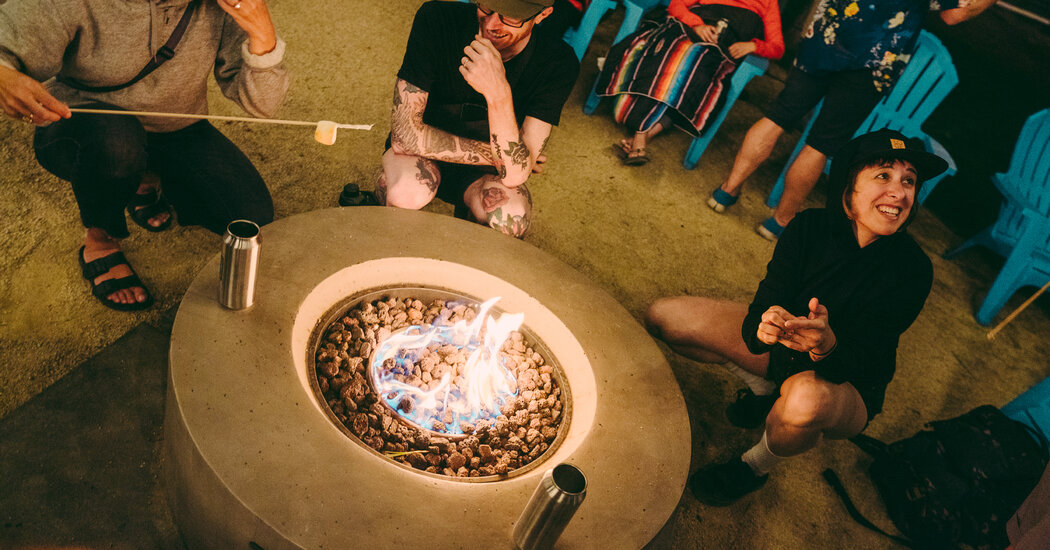In 2021, when pandemic restrictions curtailed travel, occupancy at Getaway — a collection of 30 forested properties around the country, with tiny cabins renting from $109 a night — surged above 99 percent.
“The pandemic was the perfect storm for people to get away in the woods in their own cabins, immerse in nature and be socially distanced,” said Jon Staff, the founder and chief executive of Getaway.
Though travel patterns have begun to normalize, interest in outdoorsy lodgings has continued. (Getaway’s figures remain high, in the 80 to 90 percent occupancy range.) The campsite booking service Hipcamp has nearly doubled its listings since 2019, and bookings grew sevenfold in that time. New glamping concepts like Terramor Outdoor Resort in Bar Harbor, Maine, popped up to fill demand for accommodations close to popular parks. In Washington County, Utah, which includes much of Zion National Park, taxes on overnight stays grew to just over $15 million in 2022 from $8.9 million in 2019, according to the Greater Zion Convention & Tourism Office, the county’s travel bureau.
“Even as travel habits are returning to a more prepandemic state with people more comfortable in cities and theme parks, this trend of experiencing nature and getting into the outdoors is still really relevant,” said Lindsey Roeschke, the travel and hospitality analyst with Morning Consult, a market research company. “There’s a real enduring interest in off-the-beaten-path, nontraditional vacation destinations.”
The trend has nurtured an emerging category of outdoor-themed hotel groups, including Field Station, LOGE Camps, Trailborn and Evo, often positioned near national and state parks and preserves, that encourage adventure while keeping the rates realistic.
“In the aftermath of the pandemic, this trend is solidifying,” said Jan Freitag, the national director of hospitality analytics at CoStar, a real estate analytics firm, noting that many who experimented with outdoor activities for the first time in the crisis became hooked. He also noted that on the operations side, construction costs are more moderate in rural locations.
To be sure, there are plenty of luxury resorts providing immersion in nature; in fact, ULUM, from the glamping resort company Under Canvas, opened in Moab, Utah, about 30 minutes from Arches National Park, with furnishings by West Elm in 50 safari-style tents, an upscale restaurant, guided adventures and rates starting at $549 a night.
Click Here to Read the Full Original Article at NYT > Travel…
